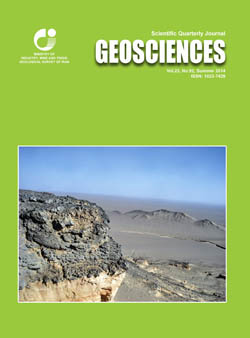Document Type : Original Research Paper
Authors
1 Assistant Professor, Department of Mining Engineering, Higher Education Complex of Zarand, Shahid Bahonar University of Kerman, Kerman, Iran
2 Professor, Department of Geology, College of Sciences, Shahid Bahonar University of Kerman, Kerman, Iran
3 Professor, Department of Geology, College of Sciences, Potsdam University, Potsdam, Germany
Abstract
The Lower Paleocene felsic plutonic rocks in the N- NE of Ghaleh-Ganj, are located on the western side of the Makran accretionary prism and the Jazmurian Depression and the east side of the Jiroft fault. They are parts of the intrusives in the Ganj complex, which itself is a part of the Jazmurian ophiolitic belt or Inner Makran. Petrographically, the intrusives are quartz diorite, plagiogranite, tonalite, granodiorite, monzogranite and albite granite in composition with mainly equigranular to inequigranular textures and subordinate textures such as micrographic, granophyric, poikilitic and zoning. Mineralogically, the plutonic rocks consist of plagioclase, quartz, orthoclase, microcline, amphibole, biotite and opaques. The plagioclases show normal, reverse and oscillatory zoning and based on their mineral chemistry studies, are mainly albite to oligoclase in composition. Amphiboles are calcic type and magnesiohornblende in composition with affinity to actinolite. The geochemical studies show that the felsic plutonic rocks are trondhjemite to tonalite in composition and belonging to a sub-alkaline magmatic series with calc-alkaline nature, and have characteristics of peraluminous granitoids. Using trace element discrimination diagrams and ocean ridge granites-normalized multi-elements diagram clearly show that the Ganj felsic plutonic massifs are plotted in arc-related granites field with affinity towards ocean ridge granites field. These characteristics along with Nb-Ta negative anomalies are known as evidences for formation of Ganj felsic plutonic rocks in a supra-subduction zone environment.
Keywords

